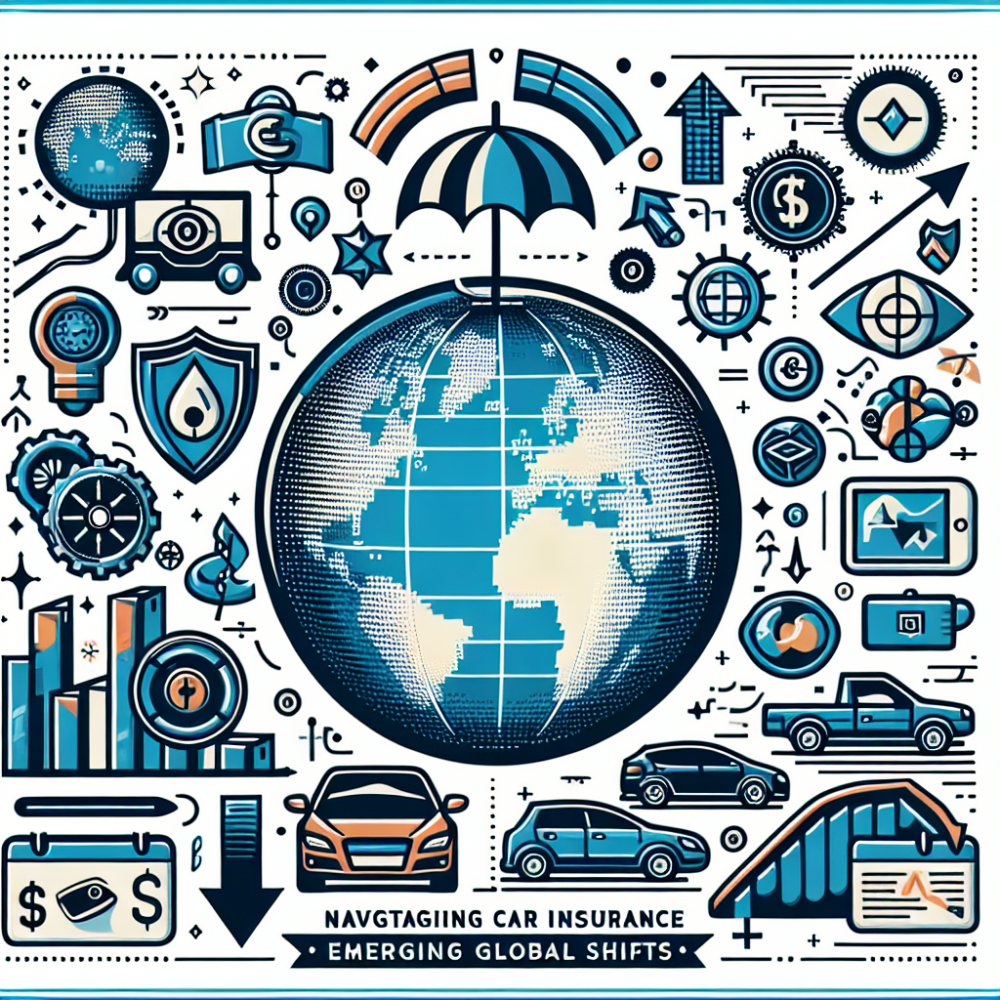Navigating Car Insurance: Emerging Global Shifts

Posted on: Saturday, March 2nd, 2024
As the automotive sector evolves with rapid technological advancements and changing consumer preferences, the global car insurance industry is undergoing significant transformation. These changes are driven by the adoption of new technologies, regulatory shifts, and a heightened focus on sustainability and customer-centric approaches. This concise guide highlights the top global trends in the car insurance landscape, providing insights into how these trends are reshaping the way insurers operate and innovate. Understanding these dynamics is crucial for stakeholders aiming to navigate the complexities of the modern insurance ecosystem.
1. Increased Adoption of Telematics and Usage-Based Insurance (UBI): Car insurers worldwide are increasingly leveraging telematics technology to offer usage-based insurance models. This trend allows insurers to monitor driving behavior in real-time, enabling more personalized and risk-accurate pricing models. It reflects a shift towards more granular and dynamic risk assessment, benefiting both insurers and policyholders through potentially lower premiums for safer driving.
2. Integration of Artificial Intelligence (AI) and Machine Learning (ML): AI and ML are rapidly transforming car insurance, from underwriting and claims processing to customer service. These technologies enable insurers to streamline operations, enhance decision-making accuracy, and offer more customized products. AI-powered chatbots and automated claims handling systems are becoming standard, improving efficiency and customer satisfaction.
3. Emphasis on Cybersecurity and Data Privacy: As insurers collect and analyze vast amounts of personal data, the importance of cybersecurity and data privacy is more pronounced than ever. Regulatory requirements, such as the General Data Protection Regulation (GDPR) in the European Union, mandate strict data handling and privacy protections, influencing global standards and practices in the insurance industry.
4. Growth of Peer-to-Peer (P2P) Insurance Models: There is a growing interest in P2P car insurance, where individuals pool their resources to insure against common risks. This model promotes transparency and trust, potentially lowering costs by reducing overheads associated with traditional insurance companies. Though still in its infancy, P2P insurance represents a significant shift towards more community-oriented and collaborative risk management.
5. Expansion of Comprehensive Coverage for Electric Vehicles (EVs): As the adoption of electric vehicles accelerates globally, insurers are adapting by offering specialized insurance products that cater to the unique needs and risks of EVs, including battery coverage and charging infrastructure damage. This trend underscores the industry's responsiveness to emerging automotive technologies and environmental concerns.
6. Regulatory Changes and New Insurance Models: Governments and regulatory bodies worldwide are reevaluating insurance regulations to accommodate new mobility models, such as ride-sharing and autonomous vehicles. These changes necessitate innovative insurance products and frameworks that address the evolving landscape of vehicle ownership and usage.
7. Focus on Sustainable Practices: The global push towards sustainability is influencing car insurers to adopt eco-friendly practices, from paperless policies to incentives for driving electric or hybrid vehicles. Insurers are integrating sustainability into their corporate ethos, aligning with consumer expectations and regulatory demands for environmentally responsible business operations.
8. The Emergence of On-Demand Insurance: Reflecting broader trends in consumer behavior towards flexibility and customization, some insurers now offer on-demand car insurance. This model allows policyholders to activate or pause coverage in real-time via mobile apps, catering to the modern consumer's desire for control and convenience.
9. Enhancing Customer Experience through Digitalization: Digital platforms and tools are central to the modern insurance experience, enabling faster, more convenient policy management, claims processing, and customer support. Insurers are investing in digital transformation to meet the increasing expectations of tech-savvy consumers, ensuring that interactions are seamless, efficient, and user-friendly.
10. Increased Focus on Disaster Resilience: In response to the rising frequency and severity of natural disasters, insurers are placing greater emphasis on resilience and preparedness. This includes adjusting risk models to better account for climate change impacts and offering products and services designed to mitigate the financial consequences of such events for policyholders.